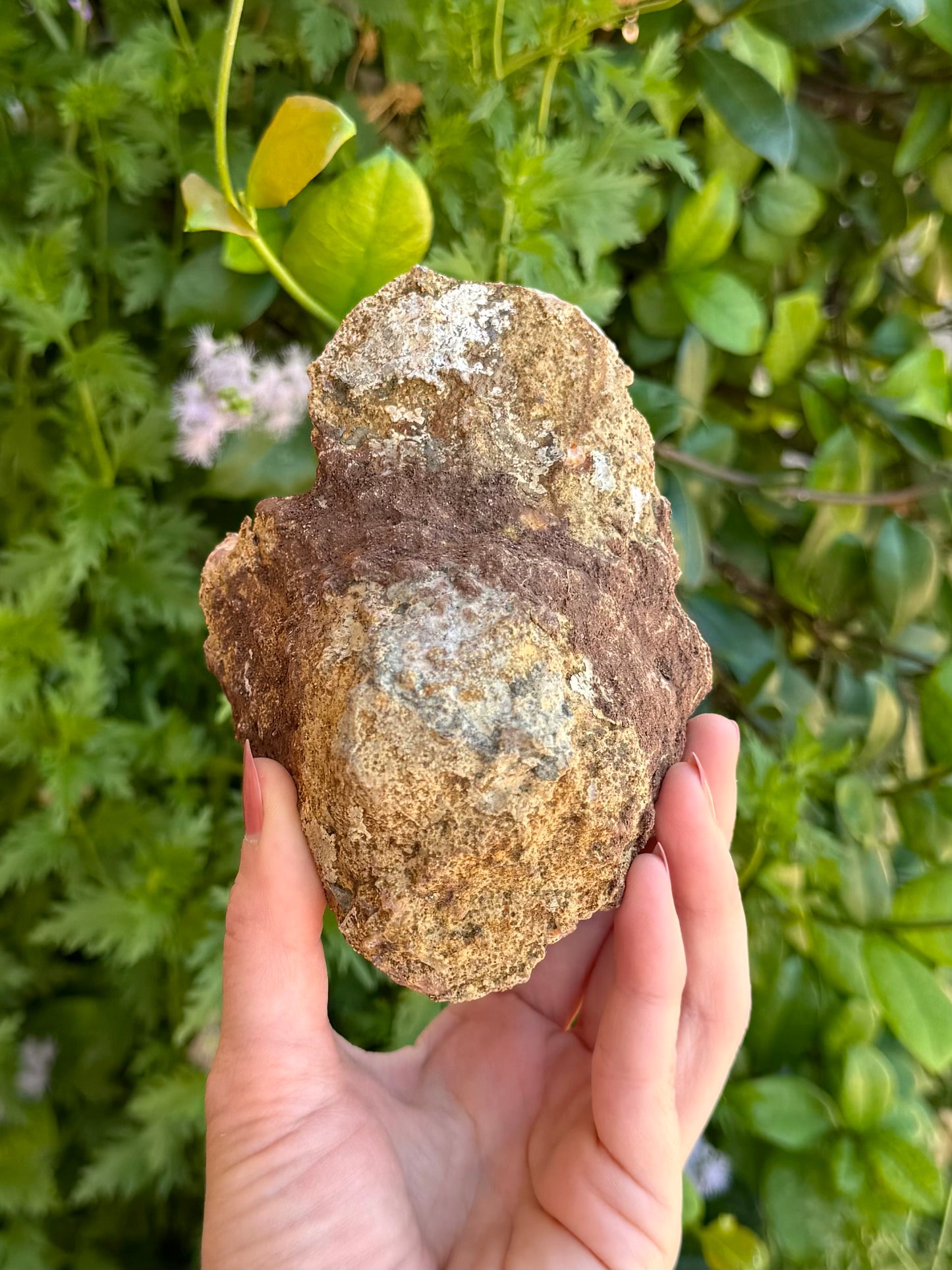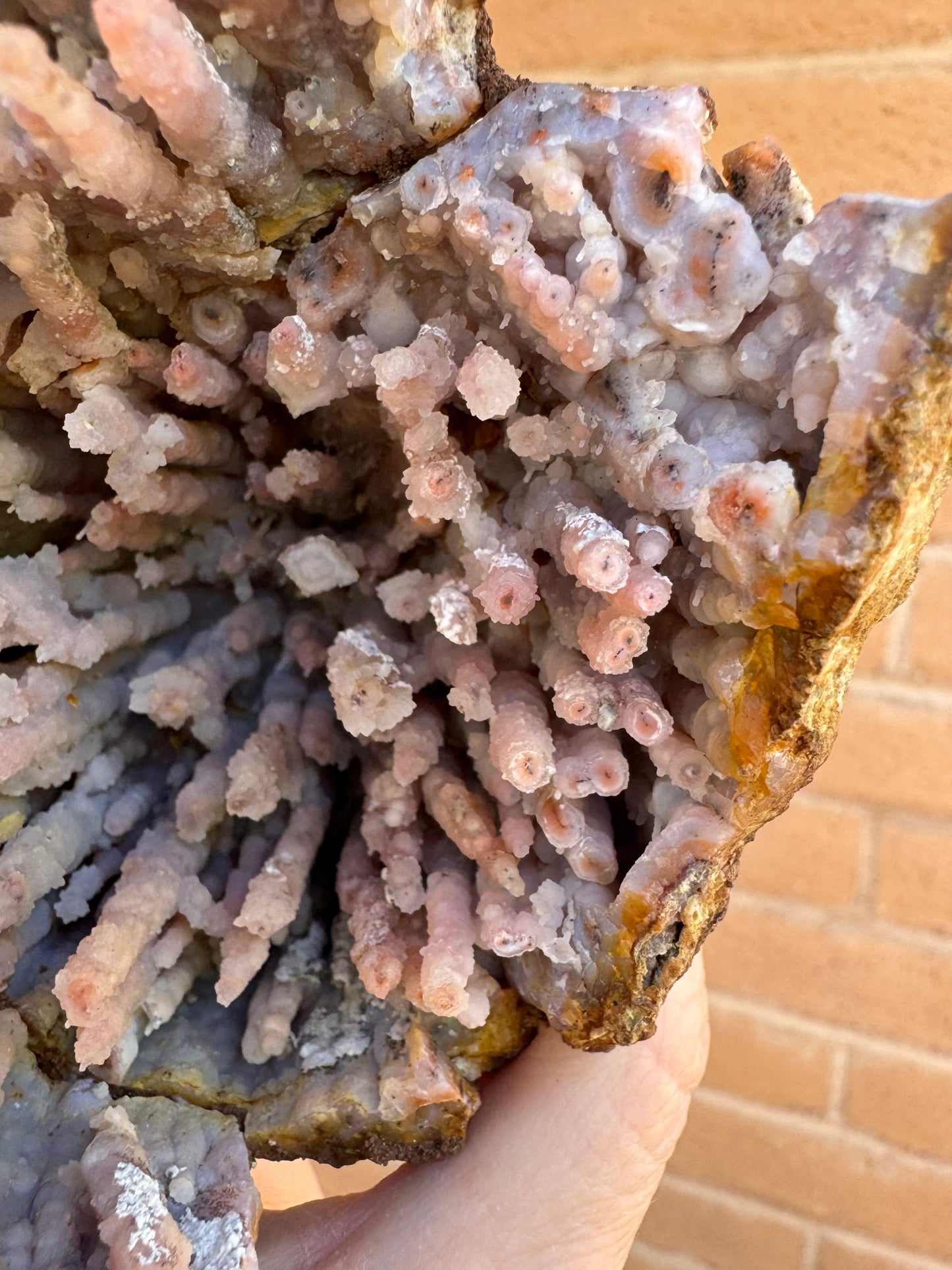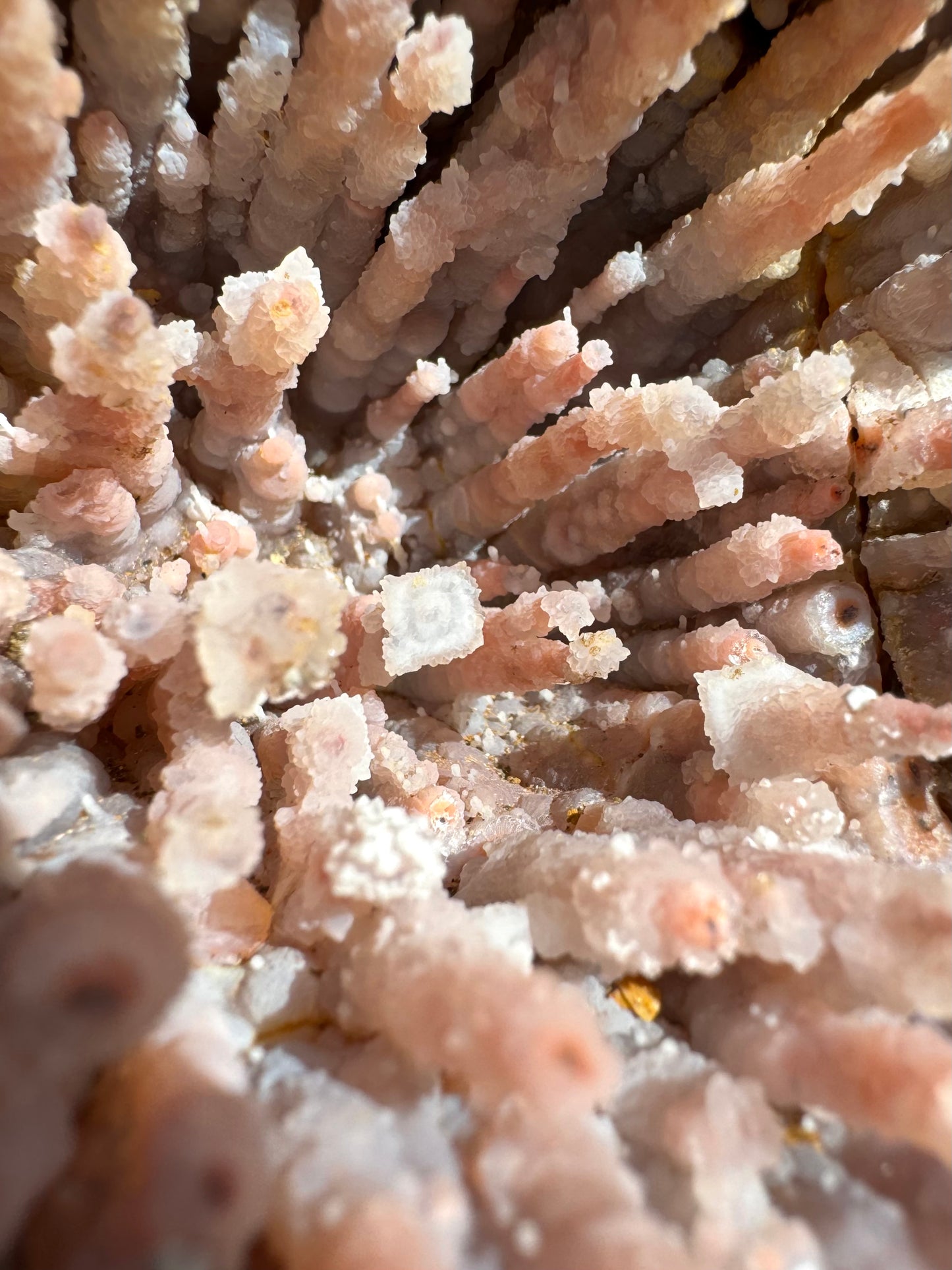Stalactitic chalcedony geode (repaired)
Stalactitic chalcedony geode (repaired)
Couldn't load pickup availability
Locale: Atlas Mountains, Morocco
Approx dimensions: 4 x 4 x 3"
Approx weight: 405g
**Repaired specimen
These unusual geodes from Morocco are like small caves lined with stalactites, botryoidal forms, and swirling agate patterns. While commonly called red chalcedony, I find the color is more orange to red-orange. Hematite causes this coloration, but later phases of growth (“second generation”) don’t contain hematite inclusions. This creates a colorless-to-white growth over the orange chalcedony, which can produce a soft orange-cream druzy coating, or bold Halloween patterns of orange and white stripey stalactites.
I would love to know more about how these formed. I have observed many are “ice cream cone” shaped—technically speaking, “conical.” This specimen is filled with orange-cream stalactites. It features a unique second set of fine stalactites growing in a different direction off of the larger stalactites, indicating a shift in position of the mineral and a second generation of stalactitic growth.
Since chalcedony and quartz are closely related you often see them grow together. They have the same chemical composition (silica) but different crystal structure (cryptocrystalline vs. crystalline). Specimens including this one feature unusual "tutus" of quartz or chalcedony growth on some of the spires—in this case it has curiously taken on a square shape and banded agate appearance.
Where stalactites have broken you can see a pinpoint of a dark, metallic, mineral at the core, surrounded by orange chalcedony, then a thick layer of translucent white chalcedony. The specimen has more of a matte appearance, not glittery, and yellow iron staining along some breaks.
This specimen has been inexpertly repaired from several pieces. Not all pieces were reset evenly so cracks may be offset or have wide gaps in places. Dirt was used to "hide" visible glue in the crack inside one side of the specimen (best visible in the second image and the last two photos).
** Brittle warning! This material has the tendency to be crumbly, shedding pieces when handled. Limit handling and do not place stress on repair joints.
Repaired: This specimen has been repaired, meaning it broke but someone recompiled and glued it back together. These Moroccan geodes are frequently recompiled and glued together—but this is infrequently disclosed :( Read more about how to detect repairs.
I don't know how often breaks occur due to rough techniques in mining or cracking the geodes open, but I suspect many of the breaks are natural based on how few intact pieces I have ever seen. I have observed many of these geodes have a fairly thin, brittle crust which may make them susceptible to fracturing as part of normal geological processes. I have also seen examples where it appeared iron staining had leaked through the breaks, indicating the cracks occurred well before the specimen was mined.


























